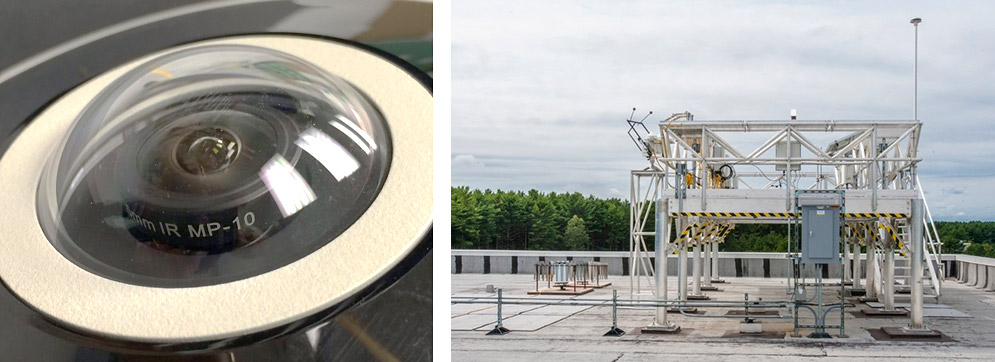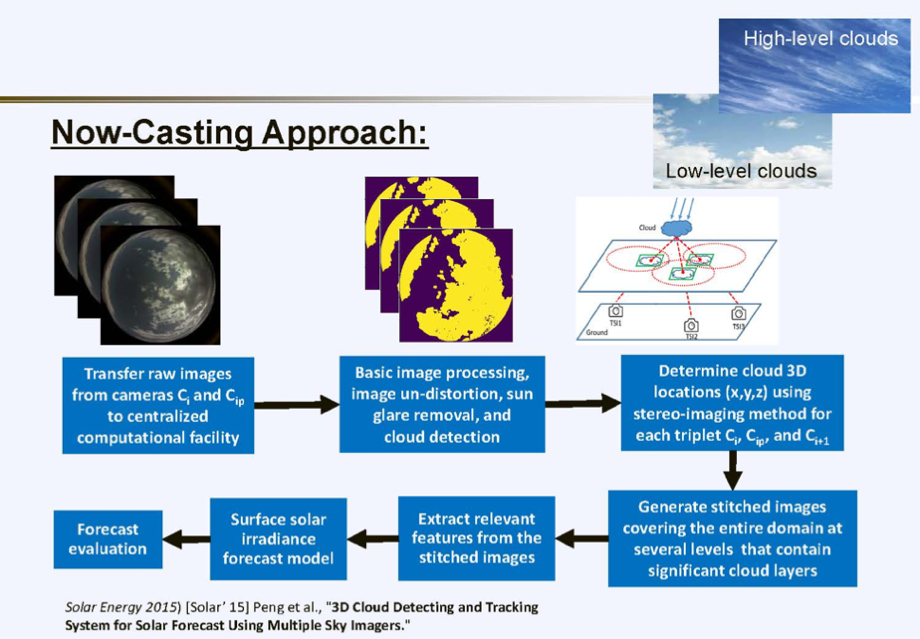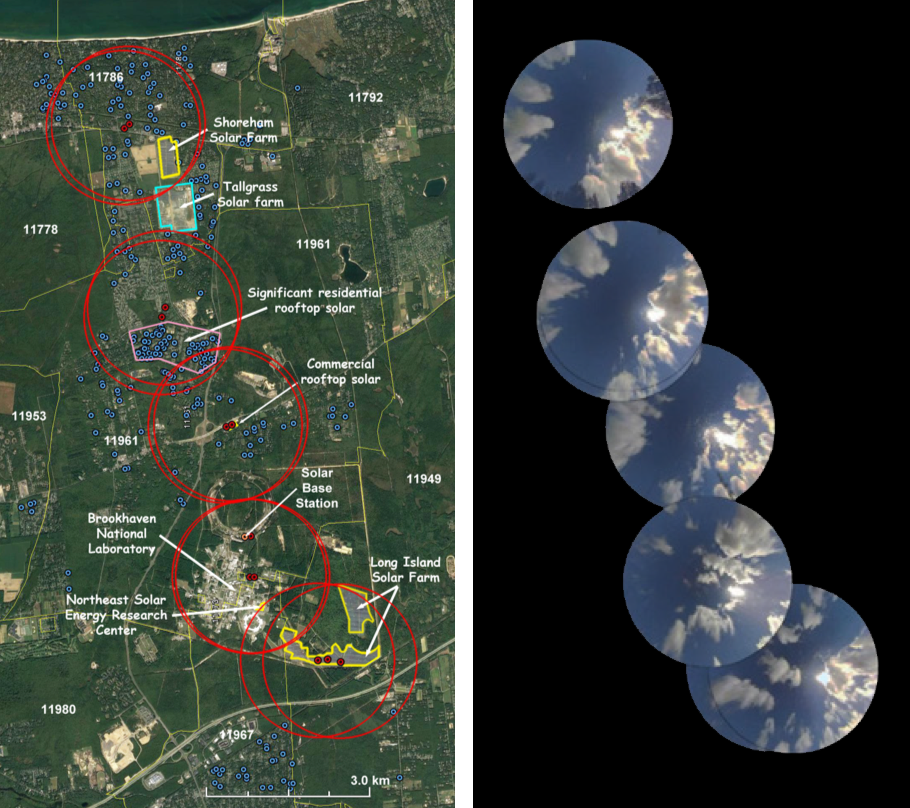



Renewables
Solar NowCasting
Solar energy available at the surface for collection by photovoltaic (PV) panels varies widely with cloud conditions on time scales from seconds to days. With increasing deployment of rooftop and utility scale PV, understanding its impact on net energy system load and planning for online generation becomes increasingly important to manage the inherent variability associated with renewable energy. Utilities benefit greatly from forecasting of the available energy resource on a range of timescales - informed by real-time data – to ensure that the variability inherent in the solar energy resource does not impact grid system operation. The information used to improve solar forecasts could also potentially be used to improve load forecasting and building load management, through improved forecasts of irradiance and other weather variables with respect to their impact on HVAC loads.
Novel Observational Systems for NowCasting Cloud Cover
Brookhaven National Laboratory has developed a cost efficient and simple observational system coupled with algorithm development for NowCasting cloud cover and available solar energy for areas over PV facilities.
- Upward looking, ground-based HD Sky Imagers map existing clouds,
- solar sensors (pyranometers) measure available energy,
- software algorithm identifies and tracks clouds in time and space,
- estimates impacts on available energy and
- provides near-term solar forecast
The system has been tested on Long Island over an area of approximately 50 km2, covering three solar generating facilities and residential rooftop installations. Forecasts were made successfully out to 30 minutes with a reliability of ~60%. Forecast reliability increases with decreased lead time and provides 95% reliability for 5 minutes lead times. The mean absolute error show improvement of this NowCasting over persistence forecasts of 20% at five minutes and 50% at 30 minutes.

Low-cost, off-the-shelf, HD (10 Megapixels) Sky Imagers readily deployed; field pyranometers and research-grade solar base station.

Cloud base height is determined by triangulating measurements of multiple imagers. Clouds are classified and tracked into discrete layers.

The BNL NowCast algorithm “stitches” together data from multiple sensor networks into an integrated forecast over a larger area and longer times.
References
Z. Peng, Yu, D., Huang, D., Heiser, J., Yoo, S., Kalb, P.D., “3 D Cloud Detection and Tracking for Solar Forecasting Using Multiple Sky Imagers,” Solar Energy 118 (2015) 496–519, 2015
